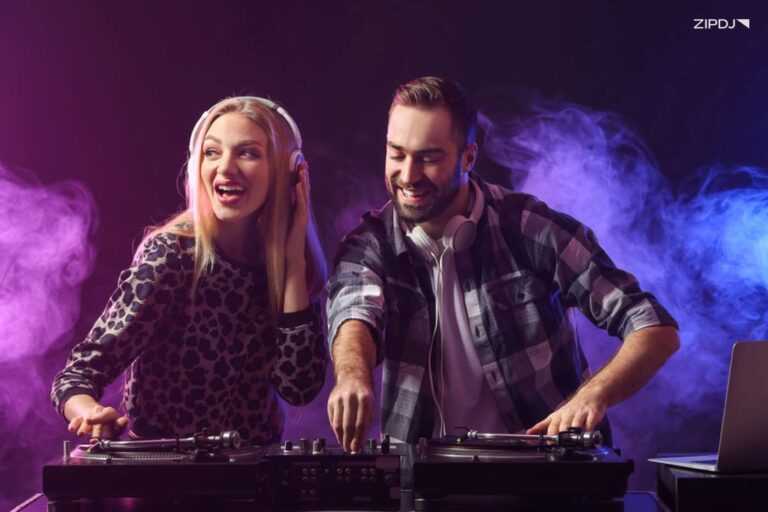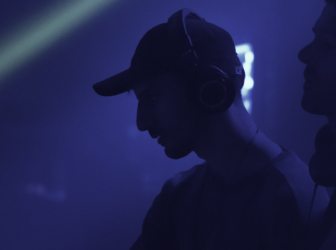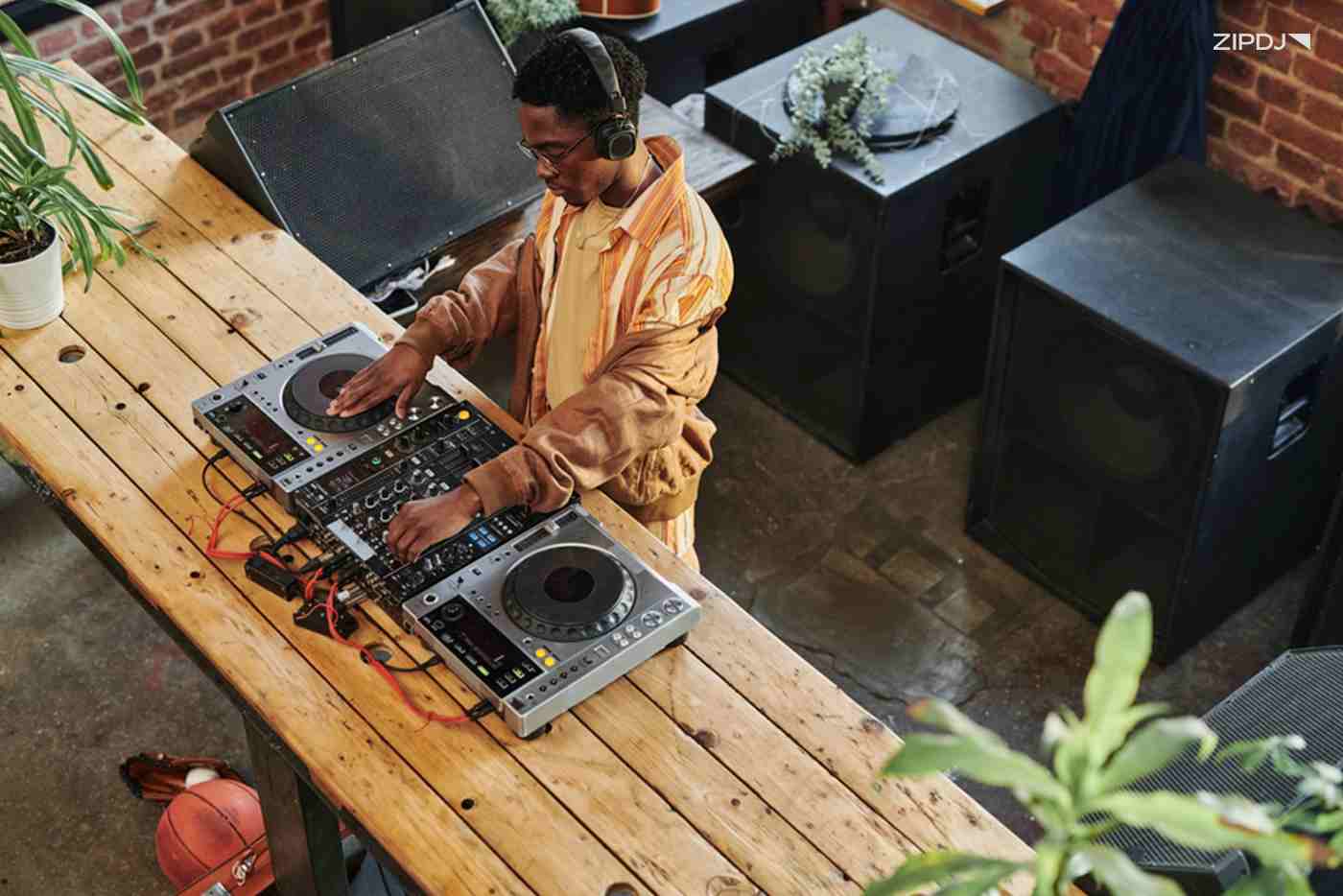Song BPM: How To Find The BPM Of A Song

Thousands of new songs are released monthly, spanning everything from mainstream pop to hip-hop and electronic dance music.
Learning to find a song’s BPM is essential for DJs who want smooth transitions that sound clean and professional.
This guide explores everything you need to know about finding a song’s BPM so you can quickly match tracks and focus on creative transitions.

What Is BPM In Music?
The term “beats per minute” is a musical expression related to the number of beats in one minute of a song.
It represents the tempo, with higher BPMs for faster songs and lower numbers for slower songs. For example, a track with 60 BPM has one beat per second, while 120 BPM means two beats per second.
Understanding BPM is critical for learning how to mix songs and pair compatible tracks with the same tempo for transitions.
This knowledge forms the backbone of the basic mixing technique upon which more advanced techniques, such as harmonic mixing, can be added.
While BPM is commonly associated with electronic dance music, understanding its principles can be applied to various classic song genres.
Beat Length & Time Signatures
Understanding BPM begins with the beat length, which represents a rhythmic unit in music from which more complex patterns are created.
In most music, this beat is performed by the kick drum, with the number of beats in each measure indicated by the song’s time signature.
The most common time signature is 4/4, which features four beats across each measure and is sometimes referred to as a quarter note.
Songs with bizarre time signatures exist, and other common signatures, such as 3/4, are often used for classic music like waltzes.
Italian Tempo Markings
For classical music scores, Italian tempo markings represent the music’s tempo when written as sheet music.
Italian tempo markings are looser than specific BPM measures, and each marking reflects a tempo range for musicians to follow.
Here are some examples of common Italian tempo markings along with their approximate BPM range:
- Larghissimo: Incredibly slow tempo used for music performed at around 20 BPM or below.
- Larghetto: Another slower tempo marker in Italian is Larghetto, which covers a BPM range of 60 to 66 BPM.
- Andante: Andante translates to English as “at a walking pace,” reflecting its 76 to 108 BPM range.
- Allegro: One of the most common tempo markings, Allegro covers 120 to 168 BPM, reflecting the sweet spot of the human heart rate.
- Pretissimo: The fastest of the Italian tempo markings, Pretissimo is used for exceptionally fast music with a BPM of more than 200.
Additional tempo markings are also available to cover the full range of possible tempos a conductor can use to control an orchestra’s performance speed.
Hear from top DJs who use ZIPDJ to stay ahead.
The Importance Of Understanding BPM
One of the first concepts all DJs learn is beats per minute. Tempo is crucial in blending tracks and implementing transitions.
This principle applies across all genres, going beyond beat-heavy electronic music into general songwriting and melody-based music.
Here’s a breakdown of why it’s essential to understand the role of BPM in music:
- Controlling energy levels and emotions: A song’s tempo plays a significant role in corresponding energy levels and the audience’s emotional reaction. Exploring different song tempos and transitioning between faster and slower BPMs is a reliable tactic for DJs to manage the crowd’s energy.
- Experimenting with different genres: Many popular music genres have compatible tempo ranges, allowing plenty of leeway when creating eclectic mixes. For example, the average EDM BPM works well with many electronic music genres, including hip-hop, house, and trance.
- Learning songwriting and composition: If you’re considering becoming a producer or songwriter, an understanding of the role of tempo is a must. Likewise, learning the basics of time signatures will help you compose music that sounds professional.
- Developing advanced DJing techniques: Beats per minute provide the foundation for beat matching, which must be mastered before more advanced techniques can be learned.
Many of the best DJ software for Mac and Windows include BPM in their interfaces, streamlining the process of creating transitions.
BPM By Music Genres
Many popular genres of songs receive extensive airtime on radio stations and dominate the global music charts.
Here’s an overview of the BPM of songs across some of the best-known music genres, from club-ready dance music to acoustic-driven folk.
1. Electronic Dance Music
BPM range: 115-180 BPM
Electronic dance music covers many subgenres, with the best club DJs typically performing mixes within the 120 to 140 BPM range.
This scope encompasses everything from house music’s BPM to electro and trance, with faster genres such as techno and drum and bass also frequently performed.
2. Hip-Hop
BPM range: 80-120 BPM
Hip-hop and rap music’s tempo is generally slower than electronic music, reaching a similar range to house music on the higher end of the spectrum.
Some styles use a polyrhythmic effect that musicians can interpret as double the rate, such as 70 BPM or 140 BPM.

3. Pop
BPM range: 90-140 BPM
Performing great pop music mixes is essential for getting wedding DJ gigs, with lots of leeway regarding the tempo of tracks.
While most pop songs sit between 100 and 130 BPM, there are faster and slower examples that can help DJs control energy levels.
Further reading: Everything you need to know about the circle of fifths for DJing.
4. Rock
BPM range: 50-200 BPM
Rock music has an impressively versatile range, with stoner rock’s slow BPM extending up to around 200 BPM for some punk rock music.
DJs often use Slower-tempo rock music for closing songs, such as the hugely popular track “Bohemian Rhapsody” by Queen.
5. Classical
BPM range: 60-160 BPM
While classical music usually refers to older compositions, the style is still adopted today, as seen in Frank Ocean’s string quartet album.
Its tempo range is broad, as we’ve covered when exploring the role of Italian tempo markings in reading sheet music.
6. Latin
BPM range: 90-250 BPM
Latin music is another broad genre with many subgenres known for different tempos, such as rumba, samba, bossa nova, and jive.
The best Latin DJs often combine elements of these genres with electronic music production techniques that are effective on the dance floor.
7. Chillout & Downtempo
BPM range: 80-100 BPM
As the name implies, downtempo—and the associated chillout genre—has a generally slower tempo range than most genres.
It’s one of the best music genres for DJing in bars and restaurants or for daytime performance in sunny venues.
8. Rhythm & Blues
BPM range: 60-130 BPM
Another popular genre for DJing in more laid-back settings is rhythm and blues, which forms a large percentage of music streams.
Faster R&B music allows DJs to transition to more lively genres, such as house and electro, and bring more energy to the mix.
Song BPM Chart
We’ve covered the BPM ranges for the major music genres, such as pop, hip-hop, rock, and other mainstream styles.
However, some DJs, such as radio DJs, often work across a wider variety of styles, many of which fall outside these mainstream categories and require additional BPM insight.
Here’s a helpful chart you can reference for additional song genres:
| Music Genre | BPM Range |
| Country | 80-160 BPM |
| Folk | 60-120 BPM |
| Jazz | 90-160 BPM |
| Easy listening | 60-120 BPM |
| Metal | 100-160 BPM |
| Punk | 160-200BPM |
| Children’s music | 60-120 BPM |
You can share this information when planning a back-to-back DJ gig to help your partner choose tracks that match in tempo and energy.
How To Find A Song’s BPM
Whether you’re learning the basics of DJing or exploring new genres, mastering the ability to determine the BPM of a song is critical.
Most DJ software interfaces include information about a song’s tempo, making it easy to navigate your collection to compatible tracks.
If you don’t have access to software that includes this information, there are tools and methods you can use to determine a song’s beats per minute.
Here’s how you can find a song’s tempo to prepare it for a mix:
- Use an online BPM finder: An online BPM finder is a quick and easy way to learn the BPM of a song. You can import a song into the tool, which will process the information and give you an accurate reading of its tempo.
- Count the beats with a stopwatch: If you don’t have access to a computer and want to figure out the BPM of a song manually, you can count the beats with a stopwatch. Most smartphones have a stopwatch feature, or you can install an app that performs this function.
- Use dedicated BPM detection software: Dedicated software like Mixed In Key can quickly determine the BPM of songs ready for mixing. It also provides information on song key and other factors that can help with harmonic and other mixing techniques.
- Search song databases: Several excellent online resources feature in-depth databases for songs and their beats per minute. Music database websites and apps such as SongBPM and Tunebat are invaluable resources if you don’t have the appropriate software for BPM detection.
Noting the BPM of songs in your library allows you to take requests and quickly select compatible songs to follow.
Build your music collection with ZIPDJ.
Summary
While some DJs prefer to stick to familiar genres, many explore different styles and take the audience on a journey.
This guide on finding a song’s BPM provides a foundation for building an eclectic music library that caters to various tastes.
As your DJing skills improve, you can explore diverse music genres featuring compatible tempos and experiment with more advanced techniques.
Not a member ?
Join Today for Unlimited Music Downloads. Visit zipdj.com for more information.



